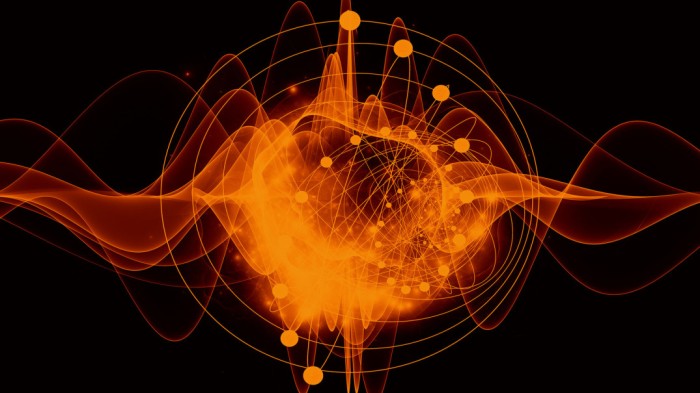by Abhijith.A.D(2016-2019)
https://www.facebook.com/abhijith.vjmd

Condensed matter physics is a branch of physics that deals with the physical properties of condensed phases of matter, where particles adhere to each other. Condensed matter physicists seek to understand the behavior of these phases by using physical laws. In particular, they include the laws of quantum mechanics, electromagnetism and statistical mechanics.
The most familiar condensed phases are solids and liquids while more exotic condensed phases include the superconducting phase exhibited by certain materials at low temperature, the ferromagnetic and antiferromagnetic phases of spins on crystal lattices of atoms, and the Bose-Einstein condensate found in ultracold atomic systems. The study of condensed matter physics involves measuring various material properties via experimental probes along with using methods of theoretical physics to develop mathematical models that help in understanding physical behavior.
The diversity of systems and phenomena available for study makes condensed matter physics the most active field of contemporary physics: one-third of all American physicists self-identify as condensed matter physicists, and the Division of Condensed Matter Physics is the largest division at the American Physical Society. The field overlaps with chemistry, materials science, and nanotechnology, and relates closely to atomic physics and biophysics. The theoretical physics of condensed matter shares important concepts and methods with that of particle physics and nuclear physics.

A variety of topics in physics such as crystallography, metallurgy, elasticity, magnetism, etc., were treated as distinct areas until the 1940s when they were grouped together as solid state physics. Around the 1960s, the study of physical properties of liquids was added to this list, forming the basis for the new, related specialty of condensed matter physics.[5] According to physicist Philip Warren Anderson, the term was coined by him and Volker Heine, when they changed the name of their group at the Cavendish Laboratories, Cambridge from Solid state theory to Theory of Condensed Matter in 1967, as they felt it did not exclude their interests in the study of liquids, nuclear matter, and so on.[7] Although Anderson and Heine helped popularize the name “condensed matter”, it had been present in Europe for some years, most prominently in the form of a journal published in English, French, and German by Springer-Verlag titled Physics of Condensed Matter, which was launched in 1963. The funding environment and Cold War politics of the 1960s and 1970s were also factors that lead some physicists to prefer the name “condensed matter physics”, which emphasized the commonality of scientific problems encountered by physicists working on solids, liquids, plasmas, and other complex matter, over “solid state physics”, which was often associated with the industrial applications of metals and semiconductors. The Bell Telephone Laboratories was one of the first institutes to conduct a research program in condensed matter physics.
References to “condensed” state can be traced to earlier sources. For example, in the introduction to his 1947 book Kinetic Theory of Liquids, Yakov Frenkel proposed that “The kinetic theory of liquids must accordingly be developed as a generalization and extension of the kinetic theory of solid bodies. As a matter of fact, it would be more correct to unify them under the title of ‘condensed bodies'”.